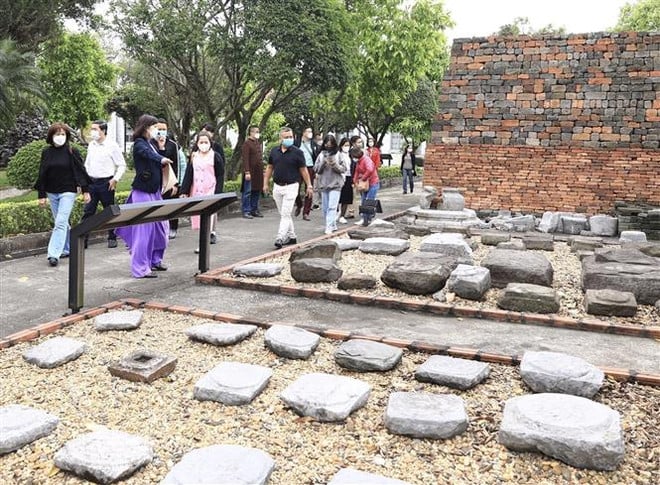 Stone foundations excavated in the archaeological site at 18 Hoang Dieu. (Photo: Hoang Hieu/VNA)
Stone foundations excavated in the archaeological site at 18 Hoang Dieu. (Photo: Hoang Hieu/VNA) Over the past 20 years, since the first excavation at the Archaeological Site at 18 Hoang Dieu, the Thang Long Imperial Citadel Heritage Site has received special attention, not only from Hanoi management agencies but also from many domestic and foreign
scientists , especially when the Central Sector of the Thang Long Imperial Citadel was recognized by UNESCO as a World Cultural Heritage. It is not only an honor but also a great responsibility of Hanoi city in preserving and promoting the precious heritage. Up to now, the heritage managers are confident in affirming that Hanoi has basically fulfilled all the commitments of the Prime Minister to UNESCO and is actively researching, preserving, and embellishing the heritage, gradually building a plan to restore and reproduce the architectural heritage of the palace in the coming time.
Preserving outstanding global values Archaeological excavations at 18 Hoang Dieu in the years 2002-2004 revealed traces of palace architecture and numerous types of rich artifacts of the Thang Long Imperial Citadel through the dynasties. This important discovery has vividly demonstrated the history of Hanoi and the history of Thang Long Citadel for about 1,300 years, from the pre-Thang Long period, through the Ly, Tran, Le So, Mac, Le Trung Hung, Son Tay periods and Hanoi citadel under the Nguyen Dynasty. The title of
World Cultural Heritage of the Central Area of the Imperial Citadel of Thang Long awarded by UNESCO has affirmed the special cultural, historical and architectural values of the heritage site, which was once the highest center of power of Dai Viet for 13 centuries. For more than a decade since the Central Area of the Imperial Citadel of Thang Long was honored as a World Cultural Heritage, Hanoi city has always made efforts to research, preserve and promote the value of the heritage. The outstanding global values of the heritage site include the length of its 13-century cultural history; the continuity of the heritage as a center of power; the diverse, rich, and vivid layers of relics and artifacts, which are respected and preserved to the maximum extent. The Thang Long-Hanoi Heritage Conservation Center (representative unit) always focuses on the conservation of architectural relics, archaeological sites, preservation and restoration of many archaeological relics... In particular, the Center coordinates with specialized agencies to preserve the remaining architectural relics, the 18 Hoang Dieu Archaeological Site, the Doan Mon Archaeological Site, the Heaven-Earth worshiping relics of the early Ly Dynasty Emperors at the Vuon Hong excavation site, ensuring that the relics retain their original elements, maintain stability to serve research work and welcome visitors. At the 18 Hoang Dieu Archaeological Site, within the scope of the archaeological pits preserved in their original state, conservation work is carried out annually with specialized tasks, such as anti-moss, drainage and harmful agents to the relics preserved in their original state, on-site display, and at the same time conducting analysis of environmental conditions, physical and mechanical properties and chemical composition to determine conservation methods suitable for the natural conditions and climate in the area... The Center also coordinates with the Institute of Monuments Conservation to deploy a plan to research, restore and develop a process to preserve and maintain the relics currently on the ground...
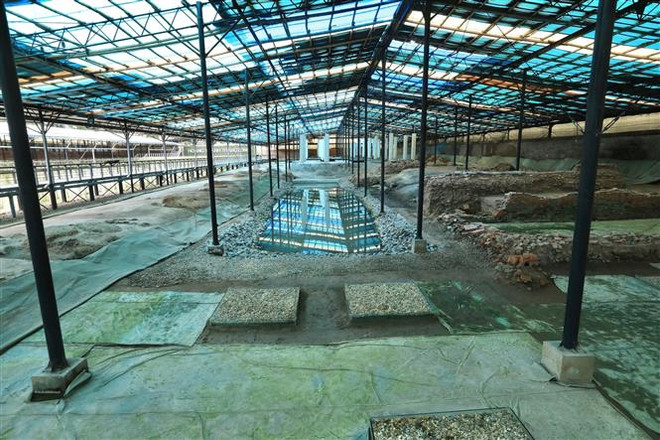 Inside the Archaeological Site 18 Hoang Dieu. (Photo: Hoang Hieu/VNA)
Inside the Archaeological Site 18 Hoang Dieu. (Photo: Hoang Hieu/VNA) Director of the Thang Long-Hanoi Heritage Conservation Center Nguyen Thanh Quang said that one of the three key projects to be implemented in the 2021-2025 period is the project to preserve the Archaeological Area at 18 Hoang Dieu, building an on-site exhibition museum according to the approved planning of the Central Relic Site of Thang Long Imperial Citadel at 18 Hoang Dieu, Hanoi (scale 1/500). In the conservation work, the Thang Long-Hanoi Heritage Conservation Center carries out international cooperation to carry out this work. The unit coordinates with experts from the Wallonia region (Kingdom of Belgium), the Ile de France region (France), and Japanese archaeologists to exchange and learn experiences in preserving archaeological relics, assessing environmental impacts on archaeological relics, and preserving wooden artifacts in archaeological excavations. Dr. Tomoda Masahiko, Tokyo National Research Institute for Cultural Heritage, said that since 2006, Japan and Vietnam have cooperated bilaterally to preserve the Thang Long Imperial Citadel Heritage Site. The first phase focused on transferring techniques on archaeological survey methods and research on the conservation of excavated artifacts at the vestiges of the ancient palace, mainly the remains of the foundations of wooden buildings buried underground. Then, the UNESCO-Japan Trust Fund project, which began in 2010, focused on assessing the heritage site through scientific research and identifying basic methods for preserving and promoting the heritage. In addition to conservation, the work of promoting values has also been well implemented with activities to promote the values of the heritage site, organize exhibitions, displays, heritage
education , etc., attracting a large number of visitors.
Research and restoration of palace architecture The major concern of heritage managers and scientists is that, after more than a decade since the Central Area of the Imperial Citadel of Thang Long was recognized as a World Cultural Heritage, the restoration of the palace architecture has only stopped at the research stage. Although many seminars have continuously taken place with opinions wishing to restore the shape of the heritage site. Scientists also believe that the research to restore the space of Kinh Thien Palace is an extremely urgent task, with profound cultural significance and value not only for Thang Long -
Hanoi but also for the whole country. After 20 years of archaeological research on the Thang Long Citadel (2002-2022), archaeologists have discovered architectural vestiges through historical periods, from the pre-Thang Long period, discovering architectural vestiges of Thang Long from the Ly, Tran, Le So, Le Trung Hung dynasties, relics from the Tay Son period and the architecture of Hanoi citadel from the Nguyen dynasty. The archaeology of the Central area of Thang Long Imperial Citadel and the Kinh Thien Palace space alone has provided the initial foundation for the restoration of palace architecture. The Kinh Thien Palace space of the Le Dynasty is the most important sacred space of the Thang Long Capital and of Vietnam in terms of capital planning, architecture, art, fine arts, spirituality, location and function. This space is structured by three components: Kinh Thien Palace, Dan Tri yard and Doan Mon. Associate Professor - Doctor Tong Trung Tin, Chairman of the Vietnam Archaeological Association, said that through the results of archaeological surveys and research on some ancient Le-Nguyen documents, we initially see that the vestiges of the Kinh Thien Palace space remain very little and have been restored over many different periods. Some studies also show that the Kinh Thien Palace space may be larger than the Thai Hoa Palace space (Hue). Ancient documents show that the Nguyen Dynasty's Palace, called Dien Long Thien, consisted of two parallel structures. “Does the space of the Kinh Thien Palace of the Nguyen Dynasty somehow reflect the scale of the space of the Kinh Thien Palace of the Le Dynasty? We need to verify this through future archaeological research,” Associate Professor, Dr. Tong Trung Tin raised the question. Also a person with a special interest in the restoration of palace architecture in the Thang Long Imperial Citadel, Dr. Nguyen Van Son, Chairman of the Hanoi Historical Association, proposed: In order to have data to restore the Kinh Thien Palace, it is necessary to promote research in the fields of archaeology, history, architecture, fine arts, etc. First of all, for the Kinh Thien Palace area, it is necessary to clarify the scale of the structure of the Palace. This requires promoting archaeological work in this area, including the Long Tri-Dan Tri courtyard, the Dragon terrace area, the N31, N33 house area and the N23, N26 house area to clarify the foundation and division of the Kinh Thien Palace. It is necessary to study the form and design, materials and materials, usage and function, tradition and technique... The research results will allow us to build up the artistic, historical, social and scientific length of Kinh Thien Palace. According to Dr. Nguyen Van Son: "If this work is carried out continuously for 3-5 years, hopefully within the next 10 years we can restore Kinh Thien Palace." The research to restore the space of Kinh Thien Palace and Kinh Thien Palace has profound significance, affirming more clearly the value of the heritage. Scientists also believe that if Kinh Thien Palace is not restored, the key source of Dai Viet culture cannot be reconnected. Therefore, Hanoi city is also continuing to research, develop a plan to restore and reproduce the palace architecture in the coming time, restoring the appearance of the heritage site, making Thang Long Imperial Citadel an attractive destination for domestic and foreign tourists./. Source: https://www.vietnamplus.vn/phuc-dung-cac-di-san-kien-truc-cung-dien-tai-hoang-thanh-thang-long-post815647.vnp
 Stone foundations excavated in the archaeological site at 18 Hoang Dieu. (Photo: Hoang Hieu/VNA)
Stone foundations excavated in the archaeological site at 18 Hoang Dieu. (Photo: Hoang Hieu/VNA)  Inside the Archaeological Site 18 Hoang Dieu. (Photo: Hoang Hieu/VNA)
Inside the Archaeological Site 18 Hoang Dieu. (Photo: Hoang Hieu/VNA)

![[Photo] General Secretary To Lam chairs a working session with the Central Internal Affairs Commission](https://vphoto.vietnam.vn/thumb/1200x675/vietnam/resource/IMAGE/2025/5/22/3b7790f499da45b2803d8ae253207ef1)


![[Photo] Prime Minister Pham Minh Chinh chairs the Government's special meeting on law-making in May](https://vphoto.vietnam.vn/thumb/1200x675/vietnam/resource/IMAGE/2025/5/22/1c880aae96fd4e0894abc47a46fe19ba)
















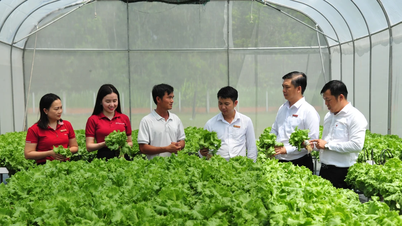
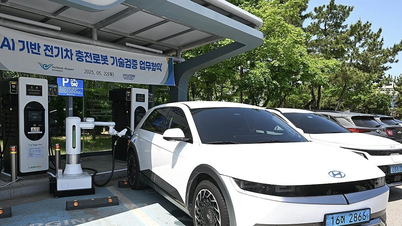


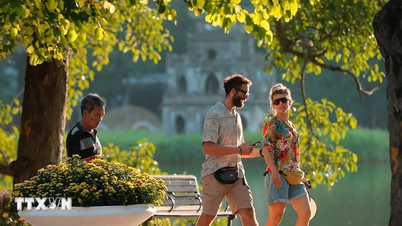





























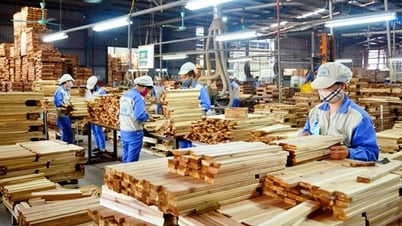
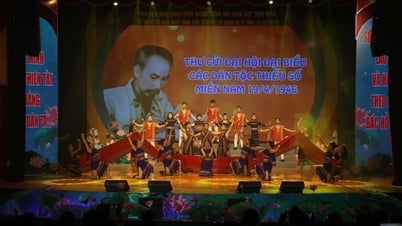

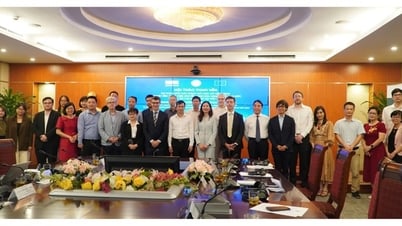


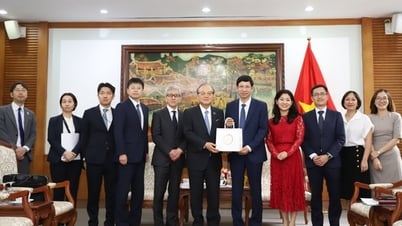
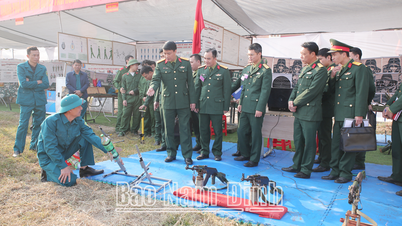

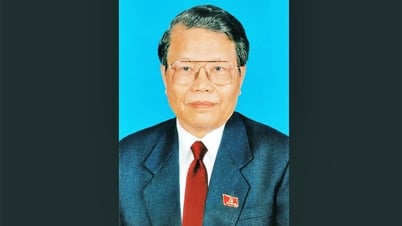

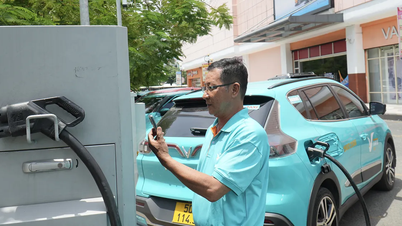

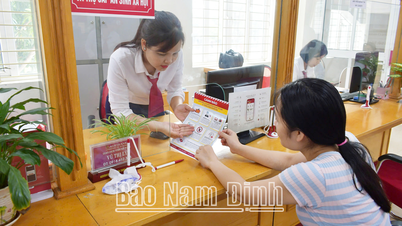
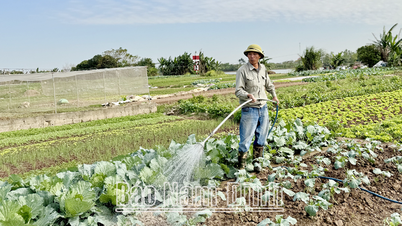
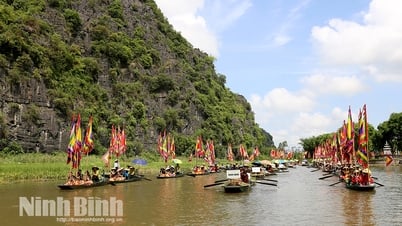



![[Podcast] Week introducing more than 500 OCOP products in Hanoi](https://vphoto.vietnam.vn/thumb/402x226/vietnam/resource/IMAGE/2025/5/22/d144aac2416744718388dbae3260e7fd)






Comment (0)